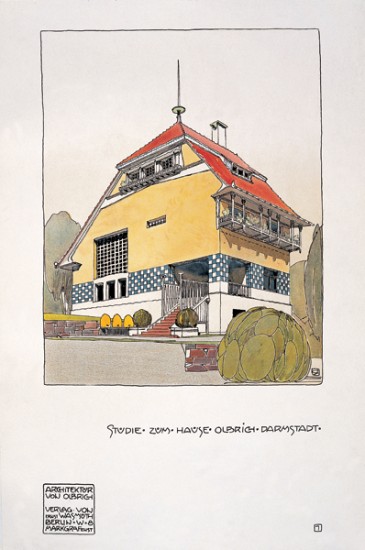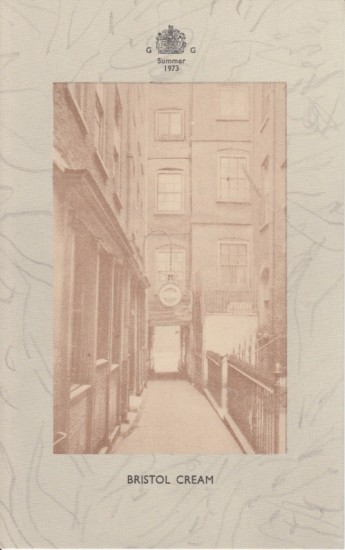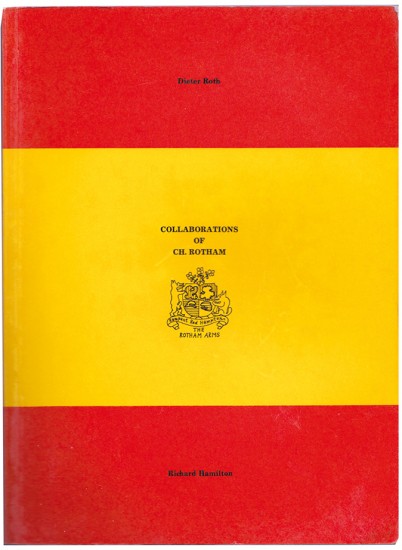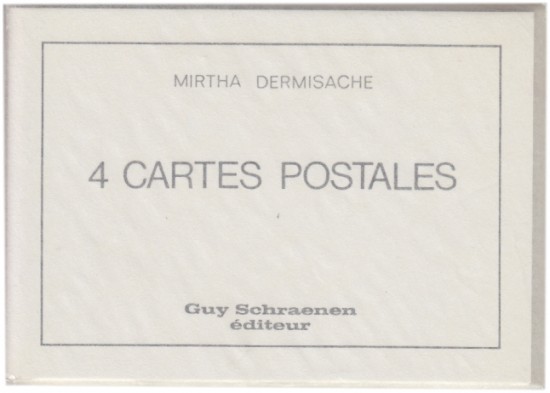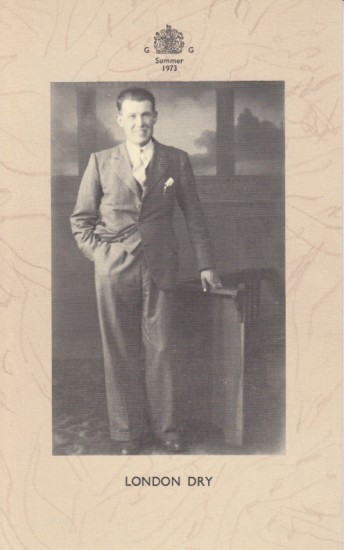Architektur. Serie I, Band I - Serie III, Band II + Sonderheft
Olbrich, Josef Maria
Berlin. Verlag Ernst Wasmuth. [c.1904–1914]
Sold
The rare Architektur portfolios, Olbrich's important contribution to Secessionist architecture.
The portfolios illustrate commissions for private houses, including the Olbrich, Keller, Ludwig, and Gluckert homes, as well as houses in Marienburg; the enormous Tietz department store in Dusseldorf; the Hamburg water tower competition of 1906; the 1907 Mannheim Jubilee exhibition; and interior designs for the 1902 Turin International Exhibition. The portfolios also contain illustrations of Olbrich's applied art: jewellery, window gates, decorative objects, light fittings, and carpets, and numerous other items.
The rare 'Sonderheft' present in this set is dedicated to 'Das Haus Feinhals in Coln-Marienburg'.
Josef Olbrich (1867-1908) was a significant force in the Vienna Secession movement. At the invitation of its patron, Grand Duke Ernst of Hesse, Olbrich joined the Darmstadt artists' colony, the Mathildenhohe, in 1899. Darmstadt ~ like Weimar in Goethe's time ~ had become the refuge of the German intelligentsia. They were fleeing the oppressive, militaristic atmosphere in Berlin under Wilhelm II. Darmstadt was to become a centre for arts and crafts.
'Artists were to live in houses that were also manifestoes and to organize exhibitions that would display their talents in a proper light. Industrial arts were to be given preeminence. In Vienna and in Darmstadt, and in his designs for furniture and objects in particular, Olbrich seemed to dissociate himself from problems of production and to be uninterested in a human reality other than that of refined intellectuals, 'progressive' industrialists, or himself. Each work betrays a preoccupation with a distant mirage of the Mediterranean sun or exotic lands such as Tunisia. Nothing could stop Olbrich. He did not tie himself to any formula, although some constants emerge from his work. The exterior designs concentrated sculptural and figurative decorations in the upper part of the building while keeping the wide surfaces in the lower part of the building undecorated and neat. As a contrast, the interior designs accumulated wainscoting, decorations, hard shapes, and vivid materials in the lower part of the walls, and they became progressively lighter as they approached the ceilings. These were his two basic approaches to achieve the same goal ~ to blur the outline of objects and to achieve lightness and rising forms. He was helped by his great artistic sensitivity. Witness his outstanding watercolors and his invariably vibrant drawings ... '. (Vienna 1900).
Olbrich designed his most significant buildings for the Mathildenhohe. Despite his brief life (he died at 40), his talent for inventing new forms and his skill at drawing and communicating greatly influenced the Vienna Secession and the major personalities of his time: Otto Wagner and Josef Hoffmann. The key building of his career was the House of Secession, Vienna, 1897-98. He also designed the main exhibition rooms of the Secession Exhibitions of 1898 and 1899, and the city of Vienna exhibit at the Paris 1900 International Exhibition.
The portfolios illustrate commissions for private houses, including the Olbrich, Keller, Ludwig, and Gluckert homes, as well as houses in Marienburg; the enormous Tietz department store in Dusseldorf; the Hamburg water tower competition of 1906; the 1907 Mannheim Jubilee exhibition; and interior designs for the 1902 Turin International Exhibition. The portfolios also contain illustrations of Olbrich's applied art: jewellery, window gates, decorative objects, light fittings, and carpets, and numerous other items.
The rare 'Sonderheft' present in this set is dedicated to 'Das Haus Feinhals in Coln-Marienburg'.
Josef Olbrich (1867-1908) was a significant force in the Vienna Secession movement. At the invitation of its patron, Grand Duke Ernst of Hesse, Olbrich joined the Darmstadt artists' colony, the Mathildenhohe, in 1899. Darmstadt ~ like Weimar in Goethe's time ~ had become the refuge of the German intelligentsia. They were fleeing the oppressive, militaristic atmosphere in Berlin under Wilhelm II. Darmstadt was to become a centre for arts and crafts.
'Artists were to live in houses that were also manifestoes and to organize exhibitions that would display their talents in a proper light. Industrial arts were to be given preeminence. In Vienna and in Darmstadt, and in his designs for furniture and objects in particular, Olbrich seemed to dissociate himself from problems of production and to be uninterested in a human reality other than that of refined intellectuals, 'progressive' industrialists, or himself. Each work betrays a preoccupation with a distant mirage of the Mediterranean sun or exotic lands such as Tunisia. Nothing could stop Olbrich. He did not tie himself to any formula, although some constants emerge from his work. The exterior designs concentrated sculptural and figurative decorations in the upper part of the building while keeping the wide surfaces in the lower part of the building undecorated and neat. As a contrast, the interior designs accumulated wainscoting, decorations, hard shapes, and vivid materials in the lower part of the walls, and they became progressively lighter as they approached the ceilings. These were his two basic approaches to achieve the same goal ~ to blur the outline of objects and to achieve lightness and rising forms. He was helped by his great artistic sensitivity. Witness his outstanding watercolors and his invariably vibrant drawings ... '. (Vienna 1900).
Olbrich designed his most significant buildings for the Mathildenhohe. Despite his brief life (he died at 40), his talent for inventing new forms and his skill at drawing and communicating greatly influenced the Vienna Secession and the major personalities of his time: Otto Wagner and Josef Hoffmann. The key building of his career was the House of Secession, Vienna, 1897-98. He also designed the main exhibition rooms of the Secession Exhibitions of 1898 and 1899, and the city of Vienna exhibit at the Paris 1900 International Exhibition.
7 vols. Folio. (490 x 335 mm). Each vol. with part title and 75 plates (several plates with matching numbers but different illustration), 'Sonderheft' with 17 plates, all plates printed recto only with title, imprint of Wasmuth and credit to Olbrich. This set lacks a single plate: 107 from Serie II. Loose as issued in original publisher's maroon cloth-backed board portfolios with cloth ties, each with gilt title and decorative vignette to upper board, 'Sonderheft' loose in matching original publisher's wrappers.
#40481
